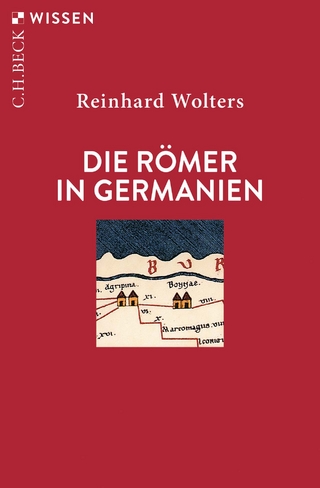Bittplätze an ägyptischen Tempeln vom 7. Jahrhundert v. Chr. bis zum 4. Jahrhundert n. Chr.
Ihre Architektur, Zugänglichkeit, Ausstattung und Bedeutung
Seiten
„Bittplätze“ sind architektonische Strukturen an peripheren Arealen ägyptischer Tempel: An Umfassungsmauern und Toren, in den Höfen und den Tempelvorplätzen, aber auch in den Arealen hinter den Tempeln, die von Borchardt 1933 als „Gegentempel“ bezeichnet wurden. Diese sind meist durch offizielle Stellen geplant und angelegt worden. Am Grundriss der Tempelareale sowie an den baulichen Gegebenheiten lässt sich ablesen, dass wahrscheinlich nur ausgewählte Menschen wie Priester, genauer Propheten, Zugang zu diesen sekundären Bittplätzen hinter den Tempeln hatten. Türen und Korridore ermöglichten den Zugang zu bestimmten, restriktiven Orten, konnten diese aber auch verschließen. Primäre Bittplätze direkt an Toren, an Umfassungsmauern der Tempelbezirke und an Dromoi waren besser zugänglich und wurden daher vermutlich häufiger von Laien aufgesucht. Die Bittplätze können im Niltal bereits seit der 18. Dynastie unter Thutmosis I. nachgewiesen werden, während sie in den westlichen Oasen erst seit der 25. / 26. Dynastie belegt sind. Sie werden insgesamt bis in die griechisch-römische Zeit gebaut und genutzt. Bei einem diachronen Vergleich der Bittplatzformen lässt sich keine eindeutige Entwicklung feststellen. Jedoch ist auffällig, dass die sekundären Bittplätze hinter den Tempeln sowohl im Niltal als auch in den Oasen während der griechisch-römischen Zeit zu einem typischen Element der Tempelanlagen wurden. Sie scheinen Ausdruck veränderter bzw. weiterentwickelter kultischer Handlungen zu sein. Dies lässt vermuten, dass Praktiken, die an diesen Kultstellen im Zuge des Tempelkultes stattgefunden haben, möglicherweise an Bedeutung gewannen. Nach dem bisherigen Kenntnisstand waren sekundäre Bittplätze nur an Göttertempeln vorhanden. Dies erscheint logisch, da die Bitten um Beantwortung von Orakelfragen oder rechtlicher Fragen sowie Bitten um Schutz v.a. an die Götter gerichtet wurden, seltener an gottgleiche oder vergöttlichte Menschen, die als Mittler zur göttlichen Sphäre fungierten. Als Grundlage für die Analyse in den Hauptteilen der Studie (Kap. 4 und 5) diente der ausführliche Katalog. Dort werden Informationen zur Architektur der Tempel und Bittplätze sowie der Funde gegeben. Zudem sind Datierung, Forschungsgeschichte und Grabungsstand der einzelnen, betrachteten Tempel und ihrer Bittplätze zu finden. In den 43 Katalogeinträgen werden insgesamt 59 Tempel detailliert besprochen und nach ihrem Standort in bestimmten Regionen geordnet. Von den 31 aufgenommenen Oasentempeln konnten 24 Heiligtümer vor Ort betrachtet, fotografisch dokumentiert und die Beobachtungen in die Untersuchung integriert werden. “Places of supplication” (“Bittplätze”) are architectural structures in peripheral areas of Egyptian temples: on enclosing walls and gates, in the courtyards and the temple forecourts, but also in the areas behind the temples, which Borchardt described in 1933 as “counter temples” (“Gegentempel”). These have mostly been planned and created by official bodies. From the layout of the temple areas and the structural conditions, it can be seen that probably only selected people such as priests, more precisely prophets, have access to these secondary places of supplication behind the temples. Doors and corridors allowed access to certain, restrictive places, but could also lock them. Primary prayer places directly at the gates, on the surrounding walls of the temple precincts and on the Dromoi were more accessible and were therefore probably visited more often by lay people. In the Nile Valley, the places of prayer have been recorded since the 18th dynasty under Thutmose I, while in the western oases they have only been occupied since the 25th / 26th dynasty. Overall, they were built and used until the Greco-Roman times. A diachronic comparison of the forms of supplication does not reveal any clear development. However, it is noticeable that the secondary petitions behind the temples both in the Nile Valley and in the oases became a typical element of the temple complexes during the Greco-Roman period. They seem to be an expression of changed or further developed cultic actions. This suggests that practices that have taken place at these cult sites in the course of the temple cult may have gained in importance. According to the current state of knowledge, secondary petitions were only available at temples of the gods. This seems logical, given the requests for an answer from Oracle questions or legal questions as well as requests for protection were directed mainly to the gods, less often to godlike or deified people who acted as mediators to the divine sphere. The detailed catalog served as the basis for the analysis in the main parts of the study (Chapters 4 and 5), providing information on the architecture of the temples and places of worship as well as the finds. In addition, the dating, research history and excavation status of the individual temples and their places of worship can be found. In the 43 catalog entries a total of 59 temples are discussed in detail and sorted according to their location in certain regions. Of the 31 oasis temples recorded, 24 sanctuaries could be viewed on site, documented photographically and the observations integrated into the investigation.
| Erscheinungsdatum | 24.06.2021 |
|---|---|
| Reihe/Serie | Ägypten und Altes Testament ; 102 |
| Verlagsort | Münster |
| Sprache | deutsch |
| Maße | 220 x 310 mm |
| Gewicht | 1800 g |
| Themenwelt | Geisteswissenschaften ► Archäologie |
| Geschichte ► Allgemeine Geschichte ► Altertum / Antike | |
| Geisteswissenschaften ► Religion / Theologie ► Weitere Religionen | |
| Schlagworte | Ägypten • Ägyptische Religion • Ägyptische Tempel |
| ISBN-10 | 3-96327-076-4 / 3963270764 |
| ISBN-13 | 978-3-96327-076-5 / 9783963270765 |
| Zustand | Neuware |
| Haben Sie eine Frage zum Produkt? |
Mehr entdecken
aus dem Bereich
aus dem Bereich
das Neue Rom und die Welt des Mittelalters
Buch | Softcover (2023)
C.H.Beck (Verlag)
CHF 30,80




